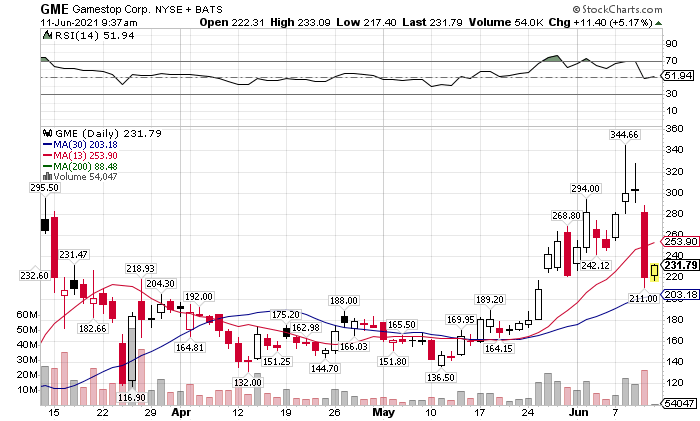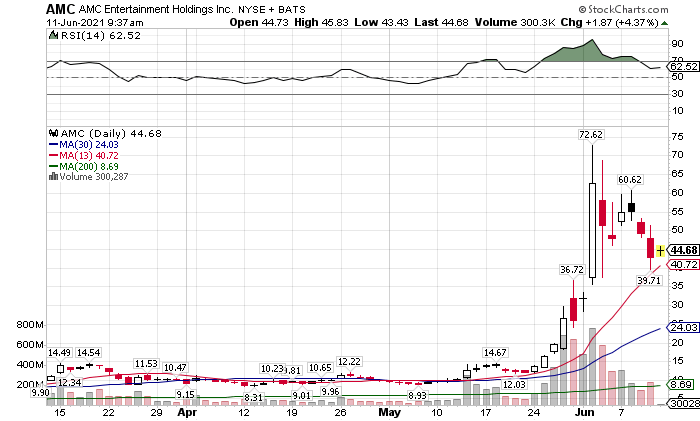The market’s been hot, right? Perhaps, the hottest!
Look at this stuff – meme stocks have gone through the roof about 10 times over!
AMC, GME, CLOV, BBBY, MEDS… YOU NAME IT!
Trading is so easy, right? You just buy it and you get paid, weeeee!
So let me, Jason Bond, tell you the best stock to buy right now to make a gazillion percent over the next few days…
Well, NO, NO, NO and NO once more!
I’d never say anything like that and for one simple reason – ecstatic markets are all fun and games until they aren’t.
GME and AMC from yesterday are case in point:


I definitely hope you weren’t the guy who bought in at the very top and is now in dire straits…
There’s one big difference between being a trader and a gambler: a trader manages his risk and protects his capital.
And this is exactly what I’d like to teach today!
Why Risk Matters
Those of you who’ve followed me for some time will know how much I like to talk about the importance of risk management.
And look, I don’t do it because I like how the phrase sounds…
Rather, based on my experience of teaching thousands of students, I truly believe that the discipline of limiting your drawdowns is one of the strongest predictors of your success or failure in this job.
There are many immediate consequences of losing money: your capital / buying power shrinks, your mental agility suffers, your patience dwindles, you may get vengeful… and did I mention that losing money in & of itself isn’t fun?
So, why not try and minimize it?
Consistency is key in this game and here are three rules that can help you achieve it
Never Double Down… Ever!
This is likely not the first thing that comes to mind when you think of risk management but believe me – this might be the single most important habit to practice!
It is always exciting and tempting to have more shares at a better price but next time you put out that buy order consider this – what if it doesn’t work?
It only takes one unnecessarily big position to move against you to cause severe, possibly irreparable damage to your account.
The old mantra goes “it’s better to be safe than sorry” and there are very few places where it’s as applicable as in trading.
Also, look at it this way: if your position is red, it means your idea isn’t working.
Why are you adding to a trade that’s already proving you wrong?
Add to trades that prove you right, instead!
Don’t Go All In
Or even half in.
Or even a quarter in, for that matter.
I know this will be a tough sell… especially for newer traders with smaller accounts.
But you will thank me later – same longevity rules apply whether your account is $3k, $30k or $3M.
You should never be in a position where one trade can cripple you either financially or mentally.
You win some, you lose some – that’s how trading works.
Red trades are the cost of doing business, so don’t let them affect your decision making or your life.
Know Your Risk / Reward
I’ve been dramatic, so let’s talk about something more positive – trading and actually trying to come out ahead.
I speak about the risk/reward concept often, but let’s recap the basics quickly:
- Risk is the % or $ value loss if the trade hits a stop level.
- Reward is the % of $ value gain if the trade hits the target.
There are 2 points here I’d like to emphasize. Both are rather obvious yet often require great discipline to implement:
- Your risk/reward has to be positive & the higher, the better. 1/3 is a good benchmark to aim for.
- You need to actually know what your stops and targets are, and stick to them – have a plan and follow it.
Now this may not sound like much to you, but believe me – adapting the habits above can make a world of difference.




14 Comments
yep i learned the hard way on that double down. and boy did it cost me .very well said Jason.thank you
Love your work
Hi Jason. My name is Sheldon and let me ask what do you think of vertical spreads, credit put spreads right now. As I enter the potential trade into my E*TRADE analyzer, I get a better than 75% chance of it making money (keeping the credit) or breaking even. What about using leverage (margin) and try and make the most of that trade. Wouldn’t that monetize best my relatively small account?
Thanks Jason
You are correct. Have a plan and stick to it.
And getting back to my previous, depending on how I set that up, there is less than 1% chance of loss with as much as 80% chance of keeping the money or breaking even.
Thank you, Jason. There is not enough on risk management, and you have laid it out well!
Would it be a good rule to sell a blue-chip stock once you make a 9 % profit and to sell when the stocks go down by 9%?
Good Advice.
Yes its good if we don’t follow account will blown up
I’ll try your advice
Re: Never double down
If the pattern is good and you just get into the position and the entire market heads south? When that happens then I have added to full position but do not 2x my planned full size. Is that a good practice or not. So far my data says it is a good practice.
Good job i like keep it coming thanks
More formula. Exempls.
Good stuff!